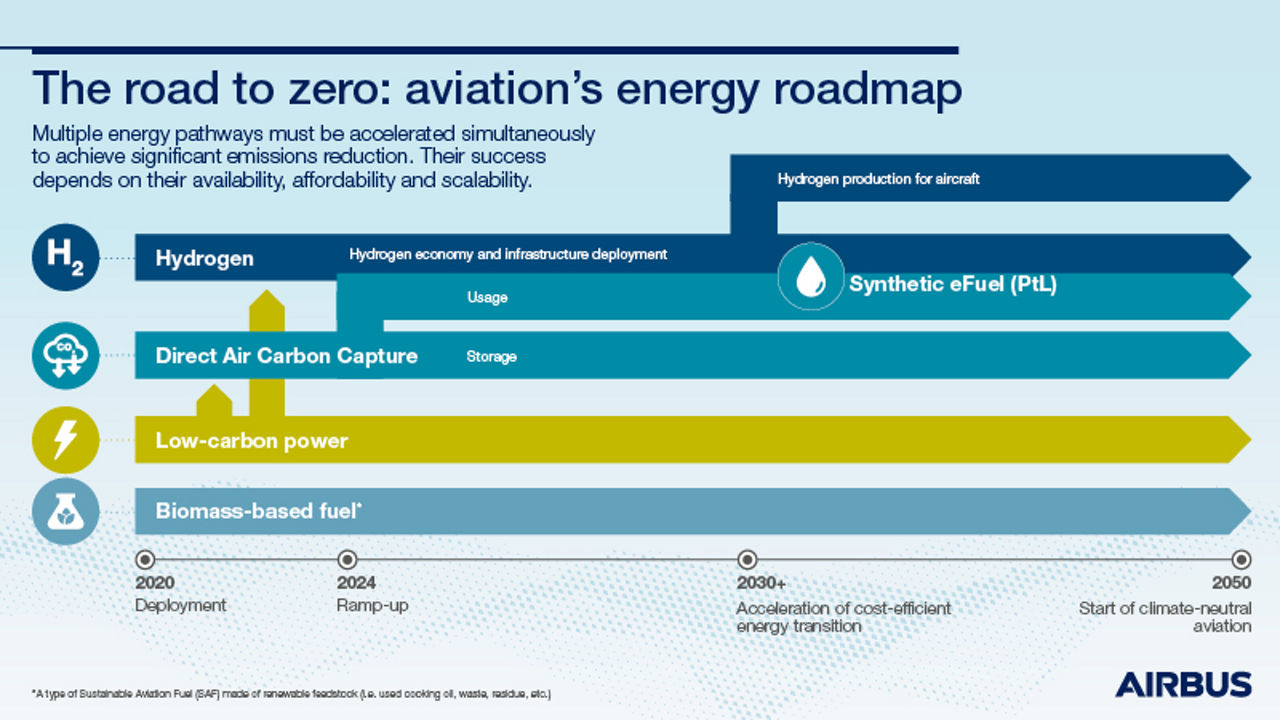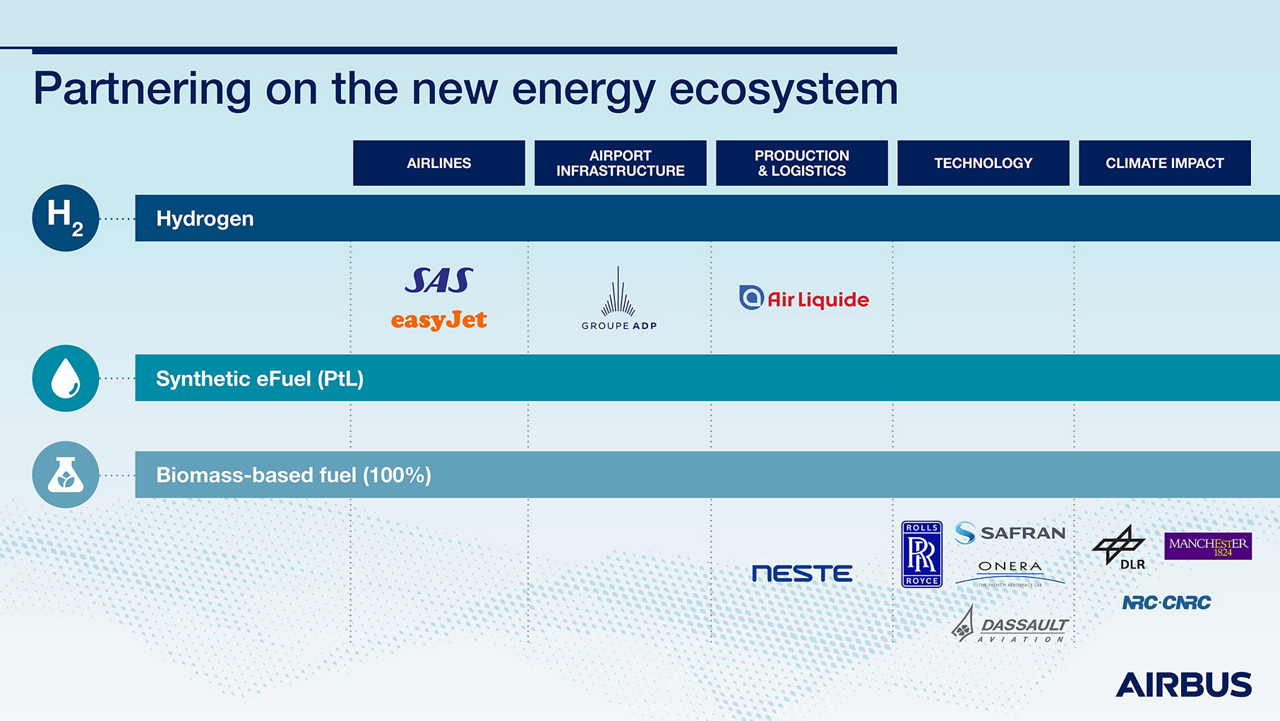
New energy ecosystem
Accelerating high-potential pathways through impactful partnerships
The aerospace industry is targeting disruptive CO₂ reductions over the medium to long terms. Fostering new energy pathways will be vital to making this a reality.
- Sustainable Aviation Fuel: These alternative fuels are designed for use as a “drop-in” replacement for traditional fossil-based fuels. Today, SAF are the only alternative fuels that are certified for use (up to 50% blend) in current aircraft.
- Biomass-based fuel: This type of SAF is made of biomass – plant or animal material such as used cooking oil, waste, residue, etc. – used for energy production.
- Power-to-Liquid (PtL) synthetic e-fuel: This type of SAF takes carbon dioxide from the atmosphere – for example, via Direct Air Carbon Capture – and synthesises it with hydrogen extracted from water. This approach transforms greenhouse gas into a raw material from which a fossil-fuel substitute can be produced with the help of electricity from renewable sources.
- Hydrogen: This energy carrier can store massive amounts of energy – up to three times more than traditional jet fuel. It can be used as either “fuel” in modified gas-turbine engines or in fuel cells to generate electricity, or power and heat.

At Airbus, we are convinced no one company can take on the task of decarbonising the aerospace industry alone. An entire ecosystem will need to be put into place – one that will involve key players from a variety of different sectors.
This is why we are putting collaboration at the heart of our climate strategy. Today, we work closely with a network of partners – including engine manufacturers, airports, technology partners, and energy suppliers. Our main objective is to explore and make technically and economically viable as many alternative pathways as possible, while putting in place the infrastructure required to encourage their widespread adoption.



